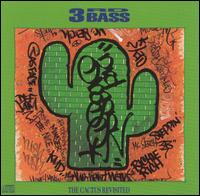Perhaps the most poignant criticism of the YMTA event could be that YouTube apparently ignored its audience when it changed the terms of its brand proposition.
The online empire built its powerbase by providing convenient on-demand content that suited the sometimes fickle, sometimes impatient and seemingly meandering viewing habits of its audience. Additionally, a great number of early viewers fled to YouTube as it seemed like a relative haven compared to the saturation of advertising and overt corporate sponsorship of conventional television.
To any of the above viewers, this event must have felt like a 90-minute gavage of self-serving experimental indulgence for YouTube, the music video “Industry” and KIA, the main corporate sponsor.
Perhaps the intent wasn’t to draw a live audience but to have some lasting video content legacy?
The YouTube MusicAwards Spotlight channel has disabled the view count for the archive of the entire show on the home page but looking at the back end statistics, as of NOV 5, 301 people had viewed it in the 48 hours since the show.
The top 4 YTMA highlight videos (the “live music videos”) captured from the performance have less than 3 Million views in the same period.
In comparison, the Official Video for Pentatonix’s Daft Punk medley has captured 1.7 M views in the first 12 hours of it being uploaded to YouTube.
From this point of view, if YTMA’s strategic goals are aligned with conventional televised music awards shows, the YTMA did not live up to expectations.
— November 28 viewership update and check in —
YTMA Show Archive – 3.7 Million views (12 K thumbs up, 6 K thumbs down)
Pentatonix’s Daft Punk has over 22 Million views.
The most highly viewed YTMA recordings:
– Lady Gaga, “Dope” 15 Million views
– Eminem “Rap God” 11.7 Million views
Currently, the Lady Gaga video has the highest views of any other Lady Gaga video produced in the past month but Eminem has 3 other videos posted this month that have in excess of 30 Million views each.
So, if the design of the event is to create critical viewership mass through archived content, the event sponsors may still be deliberating whether or not this was a success for them.
One thing is certain, we have seen an increasing number of conventional television viewership migrating to online, on-demand archived services but it doesn’t appear that relationship reciprocal? The “conventional” on-demand viewership does not appear to be flocking to live-streamed television-like programming.
There seems little doubt that YouTube would likely put on a YTMA in 2014 but the real questions to be answered are:
- what should it look like in terms of format? (archive vs live feed)
- how does it make it more relevant to its native audience?
- how can it expand its reach to new audiences better?
- how can it serve the needs of large format sponsors?






